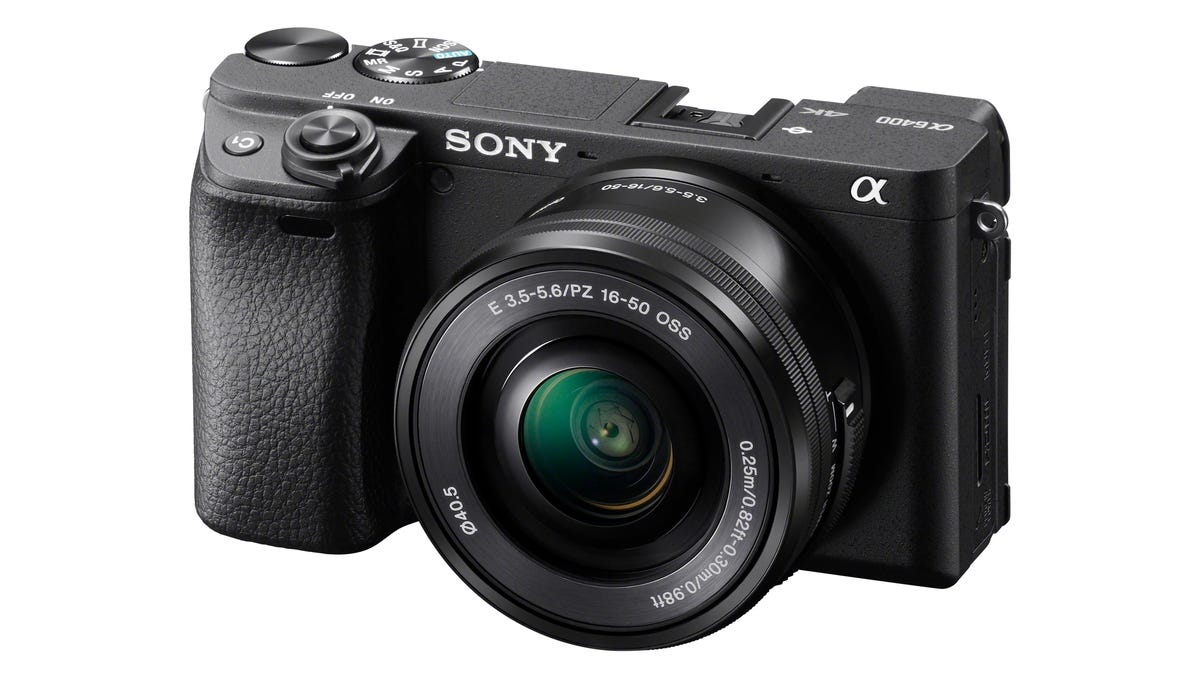Sony A6400 touts improved autofocus and object tracking
But this $900 APS-C camera is the successor to the A6300, so there's no in-body image stabilization.

The A6400
When Sony announced the A6500 APS-C mirrorless in 2016, I took it as the successor to the A6300, despite the fact that that camera had only launched about six months earlier. Why? Because the A6300 lacked one incredibly important feature -- in-body image stabilization -- and I figured Sony was moving quickly to rectify that.
But it turns out the new A6400 is the update for the A6300, packing what sounds like high-performance autofocus (AF) and improved photo and video quality, but in pretty much the same old body, lacking in-body image stabilization and using the (deservedly) much-maligned short-lived battery.
It's slated to ship in February at $900 for the body, in a kit with a 16-50mm f3.5-5.6 lens for $1,000 or in a kit with the 18-135mm f3.5-5.6 lens for $1,300.
The new hybrid autofocus system has the same 425 phase-detection points as the A6300, but bumps the contrast-detection areas from 169 to 425. That's important, because contrast AF is what the A6400 (like most other cameras) uses for subject tracking. In addition, Sony threw in some AI to help with object recognition, and now the company claims it handles real-time eye tracking and has improved object recogition and faster AF subject lock. Win-win-win. Animal eye tracking will come in a future firmware update.
An update to the latest image processor also boosts the features and image quality -- it usually does -- offering a higher maximum native sensitivity of ISO 32000 (both movie and still), an HLG Picture Profile for shooting HDR video, a 1080/120fps slo-mo speed and (finally!) an intervalometer for time-lapse.
Sony also managed to upgrade the LCD, using a vertical flip-up touch screen this time. And unusually for a nonprofessional camera, the company now says its shutter life is rated for 200,000 cycles.
Otherwise, the specs are similar, from the 11fps maximum continuous-shooting rate (with AE/AF) to its 24.2-megapixel resolution.
It feels petty to complain, since you'll still be getting a whole lot of camera for the money. But the lack of in-body IS, which was barely understandable three years ago, is doubly disappointing today, especially given the focus on shooting action and the camera's prosumer orientation; OIS lenses are bulkier and more expensive than those without. As is sticking with the 360-shot NP-FW50 battery rather than giving us an improved, more efficient Z series like what debuted with the A9.
The A9, by the way, is getting a big firmware update to support the new eye-tracking capabilities and more, starting in March; the A7 III and A7R III will be getting it in April.
The A6500 is due for an update -- likely the rumored A7000 -- and you can bet it will get all the autofocus and image processor improvements and more, so the A6500's price will probably drop from its current $1,200 level. At which point the decision of which to buy will get kind of confusing.
Correction, 6:03 p.m. ET: Corrects animal eye-tracking availability.

